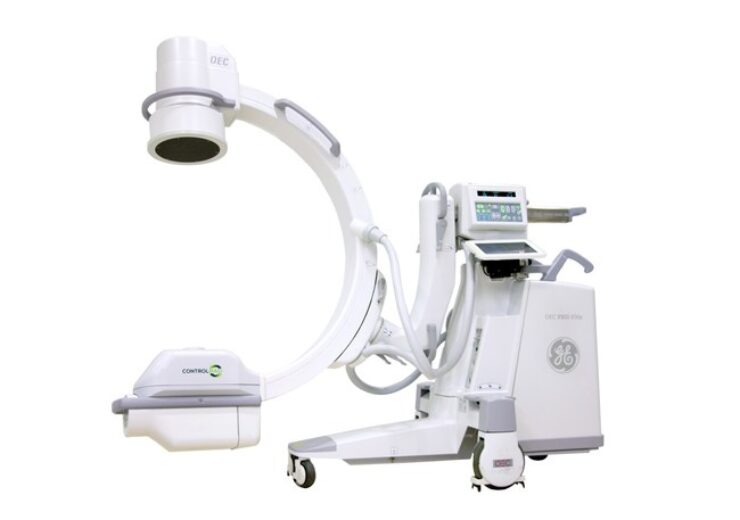With its proprietary semi-transparent filter, tablet and image processing technology, the ControlRad Trace solution can be retrofitted onto existing mobile C-arms, reducing the barrier to adopting the technology in order to reduce unnecessary radiation without compromising image quality in the region of interest or overall workflow

ControlRad Trace Model 9 installed on the GE OEC 9900 Elite Mobile C-arm. (Credit: PRNewswire / ControlRad, Inc.)
ControlRad, Inc., a privately held medical technology company focused on dramatically reducing unnecessary radiation exposure during fluoroscopically guided procedures, today announced that the U.S. Food and Drug Administration (FDA) granted 510(k) clearance for ControlRad Trace use on OEC 9900 Mobile C-arms.
“This additional FDA clearance allows us to offer the critically-important protection of our radiation reduction technology to even more patients and staff in need of mobile C-arm related procedures,” stated Chris Fair, EVP & President of ControlRad.
In addition to the regulatory clearance, ControlRad announced today that they have closed a Series C financing round led by current investor Questa Capital. “We are extremely appreciative for the additional investment from Questa and also pleased to welcome new investor Windham Ventures to our investor group. We are excited to further build our commercial reach to advance our efforts to help save patients and clinical staff from the harmful effects of excessive radiation,” stated Guillaume Bailliard, CEO of ControlRad.
“We believe that ControlRad’s Trace technology is vital to reducing radiation exposure in the clinical setting, and we are proud to be investors in a breakthrough technology with a great management team focused on commercial execution,” stated Ryan Drant, Founder and Managing Partner, Questa Capital.
With its proprietary semi-transparent filter, tablet and image processing technology, the ControlRad Trace solution can be retrofitted onto existing mobile C-arms, reducing the barrier to adopting the technology in order to reduce unnecessary radiation without compromising image quality in the region of interest or overall workflow.
Source: Company Press Release
